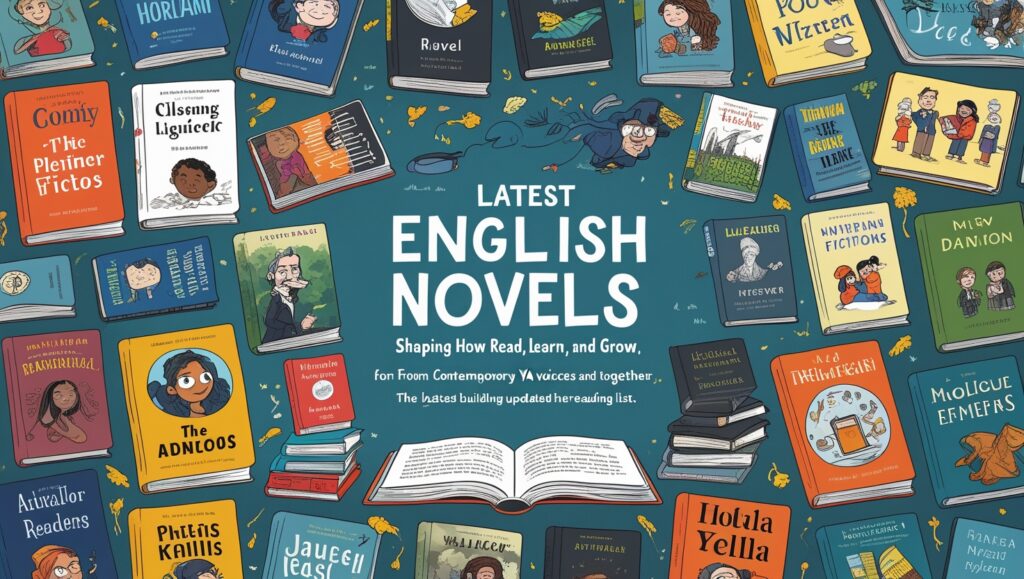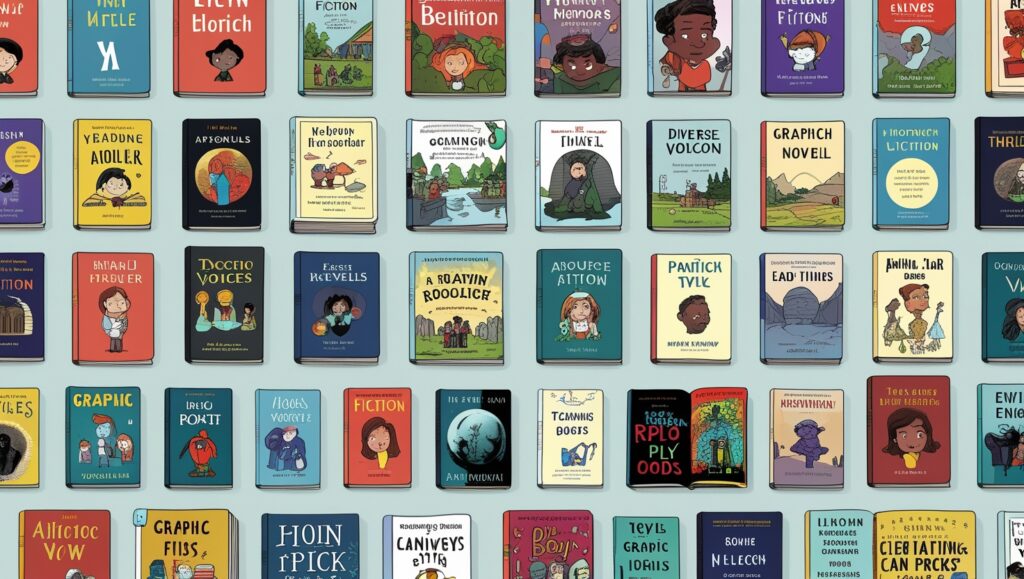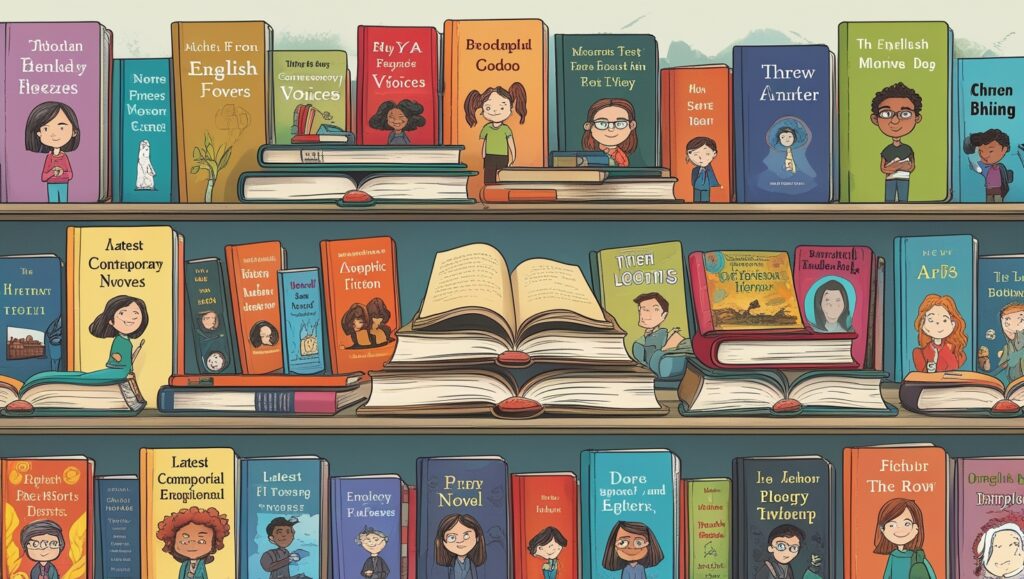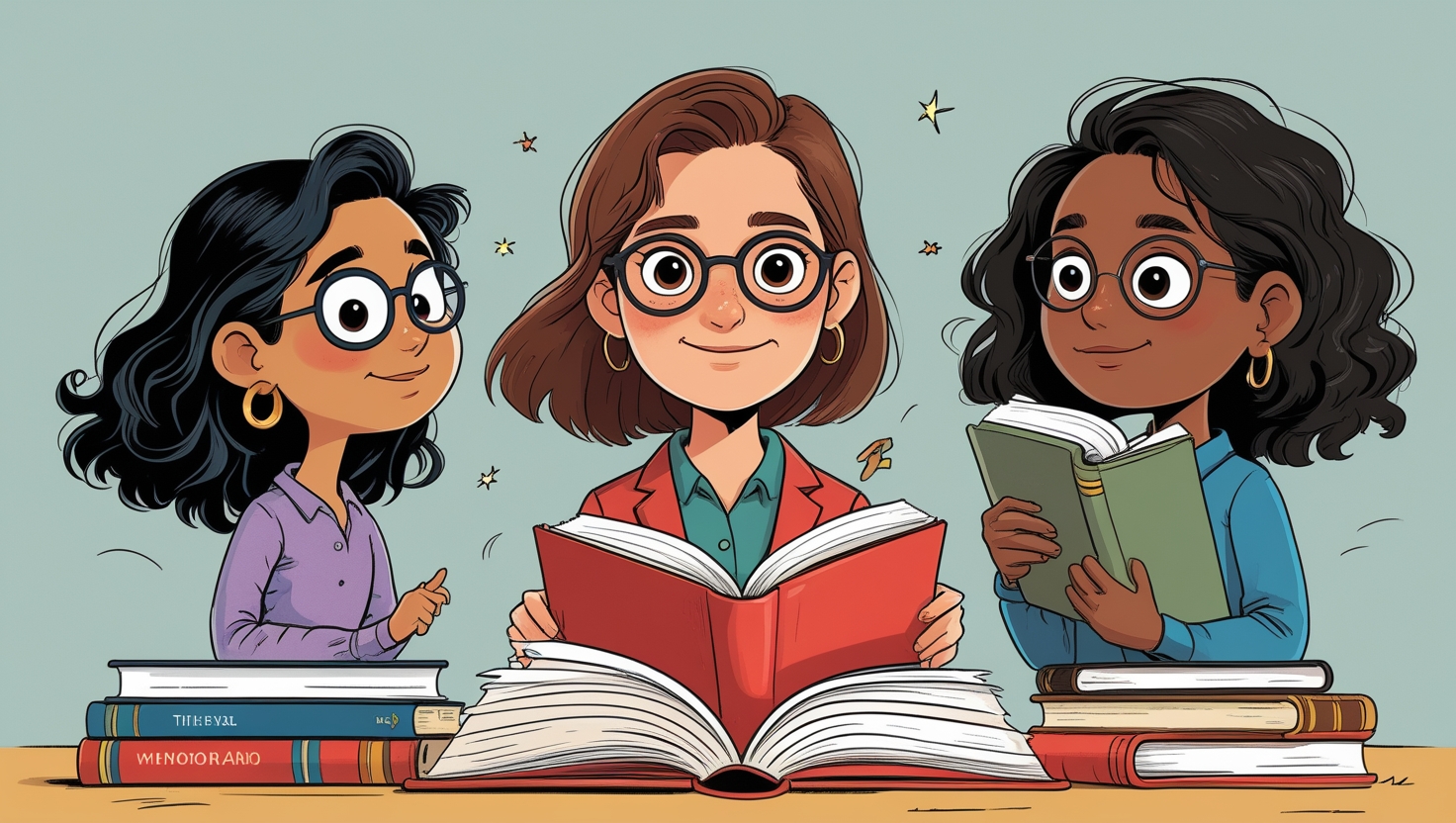Introducton
Latest English Novels for Students, Students need books that engage. They also need books that teach. Therefore, this guide highlights the latest English novels students love. Moreover, it balances classroom-ready texts with free-time favorites. Consequently, you’ll find contemporary YA, college-level fiction, short novels, and global voices. Additionally, each section points to fresh sources and lists so you can follow latest releases and buy or borrow them. For teachers, parents, and students, this article gives practical picks. Furthermore, it explains why each group of novels matters for learning. Finally, use these suggestions to build reading lists, class libraries, or simply to enjoy strong stories.
1. Contemporary YA that connects emotionally
Young adult fiction still leads for students. First, because it speaks in plain but powerful language. Second, because it deals with identity, school life, and growing up. For example, many 2024–2025 YA novels explore mental health, friendship, and social justice. As a result, readers feel seen. Moreover, teachers can pair these books with short assignments. Consequently, students discuss, write, and reflect with confidence. In addition, modern YA often uses accessible pacing and gripping plots. Therefore, reluctant readers finish whole books. Also, many public libraries and school lists regularly update YA picks, so check staff recommendations and award shortlists.
2. Coming-of-age novels that deepen understanding
Coming-of-age stories help students think about growth. For instance, they show choices, consequences, and moral conflict. Therefore, these novels are ideal for class discussions. Moreover, they often combine vivid settings with clear character arcs. As a result, students practice literary analysis easily. Additionally, contemporary coming-of-age novels update older tropes. In particular, many recent titles include diverse voices and modern dilemmas. Thus, they feel relevant to today’s classrooms. Likewise, teachers can assign short comparative essays. Consequently, students learn theme, tone, and structure without getting lost in dense prose. Finally, check curated lists for the latest coming-of-age releases so you can link to purchase or library pages quickly.
3. Diverse voices: why representation matters
Diverse novels help students see the world. First, representation builds empathy. Second, it expands cultural knowledge. Therefore, choose novels written by Black, Indigenous, Asian, Latinx, and other authors. Moreover, recent years brought more strong debuts and translated works. As a result, classroom conversations become richer. Additionally, diverse texts allow cross-curricular ties to history and social studies. For example, contemporary novels about migration, identity, and family allow meaningful projects. Furthermore, many library lists and award committees highlight diverse titles for teen readers. Consequently, constantly refresh your reading list with those recommendations. For ready-made lists of contemporary titles and award winners, consult library and professional educator sources.

4. Short novels and novellas — quick wins for class
Short novels are perfect for tight schedules. First, they can be read in a week. Second, they provide full themes without heavy time commitment. Therefore, assign one short novel per term and build activities around it. Moreover, novellas often focus story and theme tightly. As a result, students practice close reading and textual evidence quickly. Additionally, short novels are useful for mixed-ability classes. For struggling readers, they provide success. For advanced readers, they offer depth through discussion prompts. Consequently, include a mix of short forms in your syllabus. Finally, check library staff picks and curated lists for short contemporary titles that are classroom-ready.
5. Historical fiction that teaches context
Historical novels teach both story and context. First, they make past events vivid. Second, they help students understand cause and effect. Therefore, pairing a novel with primary sources strengthens critical thinking. Moreover, recent historical fiction often centers under-told perspectives. As a result, students gain new insights about familiar periods. Additionally, historical novels translate into research projects and creative assignments. Consequently, teachers can ask students to compare the novel’s portrayal with factual accounts. Furthermore, many booklists highlight historical novels suitable for classroom use. Thus, update your selections with current staff and award lists to include the freshest titles.
6. Thrillers and page-turners for reluctant readers
Thrillers hook readers fast. First, their plots move quickly. Second, suspense keeps attention high. Therefore, thrillers are excellent for reluctant students. Moreover, modern thrillers come in YA and adult crossovers, with school-set or campus mysteries. As a result, students who dislike slow-paced classics often find success with these titles. Additionally, thrilling books provide opportunities for prediction-based activities, which build inference skills. Consequently, teachers can design short quizzes that focus on foreshadowing and clue-gathering. Finally, stay current by checking annual best-of lists and bestseller roundups for thriller releases that suit teen readers and classroom appropriateness.
7. Novels that build vocabulary and grammar naturally
Some novels are ideal for language growth. First, they use clear, contextual vocabulary. Second, they repeat key words in meaningful sentences. Therefore, students learn words in context, not in isolation. Moreover, modern realistic fiction often models conversational English. As a result, reading improves both vocabulary and informal register. Additionally, teachers can scaffold independent reading with vocabulary journals and short in-class exercises. Consequently, students expand active vocabulary faster. Furthermore, paired readings (novel + short story) allow targeted grammar lessons. Finally, choose contemporary novels that match student levels and include accessible but rich language. For lists of accessible contemporary novels, refer to library and teacher-curated resources.

8. Graphic novels and illustrated fiction for visual learners (≈140 words)
Graphic novels combine image and text. First, they help visual learners follow plot and tone. Second, they support comprehension through visual cues. Therefore, include graphic novels for mixed-ability classrooms. Moreover, many modern graphic novels tackle serious themes—identity, history, and social justice. As a result, they are classroom-worthy. Additionally, pairing a graphic novel with a full-text novel encourages comparative analysis of medium and effect. Consequently, students learn about narrative choices and visual storytelling. Furthermore, libraries and school lists increasingly include graphic novels in recommended reading. Thus, update your classroom library with recent graphic titles that match syllabus goals.
9. College-level reads for older students
For older students, choose novels that provoke debate. First, contemporary literary fiction often explores identity, power, and ethics. Second, these novels require deeper analysis but reward close reading. Therefore, include one or two college-level novels for senior students. Moreover, contemporary shortlists and best-books lists provide great options. As a result, students practice thesis-driven essays and seminar discussions. Additionally, encourage research projects tied to the novel’s themes. Consequently, students learn to cite secondary sources and build arguments. Finally, consult professional reviews and curated “best of” lists when choosing titles so you stay updated on quality contemporary fiction appropriate for older teens and young adults.
10. Books that support social-emotional learning (SEL)
Novels can teach social-emotional skills. First, character-driven stories model empathy and coping. Second, reading about diverse challenges gives perspective. Therefore, incorporate books that address grief, anxiety, and friendship. Moreover, teachers can design reflective journals and role-plays from the book’s scenes. As a result, students practice perspective-taking and emotional vocabulary. Additionally, SEL-aligned novels often become anchors for community circles and peer support discussions. Consequently, schools report stronger classroom culture when reading is coupled with SEL lessons. Finally, check library staff picks and teacher resources for the newest novels that explicitly support SEL outcomes.
11. How to choose books for different grade levels
Choosing books requires balance. First, match complexity to grade and skills. Second, consider maturity of theme and language. Therefore, for middle school choose accessible YA with clear arcs. For high school, pick complex novels with layered themes. Moreover, consider cultural relevance and curriculum standards. As a result, reading aligns with learning goals. Additionally, involve students in choice—let them vote on one class read. Consequently, engagement rises. Furthermore, use library lists and educator recommendations to discover the latest releases that fit each level. Finally, keep a reserve list of short novels and novellas for quick substitutions if schedules shift. For grade-based picks, see teacher-focused lists and public library recommendations.
12. Fresh 2024–2025 releases students should notice
Each year brings standout novels. First, 2024–2025 offered new YA debuts and strong literary fiction. Second, award lists and staff picks highlight titles that work in classrooms. Therefore, watch lists like YALSA Top Ten and NYPL staff picks for timely choices. Moreover, Goodreads maintains ongoing YA release lists that show popularity and reader feedback. As a result, you can spot trending novels before they become classics. Additionally, many book blogs and library roundups publish monthly “most anticipated” and “best of” posts. Consequently, subscribe to a few trusted lists so you receive updates. Finally, link to the library and award pages to preview titles, read descriptions, and find purchase or lending options.

13. Simple lesson ideas to pair with any novel
Pair novels with short, active lessons. First, start with a reading guide that asks prediction and connection questions. Second, include a vocabulary log and a one-paragraph response after every two chapters. Therefore, students build comprehension steadily. Moreover, use Socratic circles for deeper novels so students lead discussion. Additionally, create creative projects—visual timelines, character letters, or mock interviews. Consequently, students practice different skills: writing, speaking, and analysis. Furthermore, mix formative checks with a summative essay or project. Finally, adapt tasks to the novel’s length and difficulty. This way, novels become tools for both content knowledge and skill development. For more activity ideas, consult teacher resource hubs and library educator pages.
Conclusion + how to use the “latest links”
Books change the classroom. Therefore, update reading lists every term. Moreover, follow trusted sources for the latest releases: public libraries, YALSA lists, major literary roundups, and Goodreads release lists. Consequently, you’ll find fresh, classroom-ready novels quickly. Additionally, use the citations in this article to jump to current staff picks and award shortlists. Finally, create a shared reading list for students and families with direct links to library copies or local sellers. This makes borrowing and purchasing easier. If you want, I can now produce a printable reading-list PDF with live links to the current NYPL/YALSA/Goodreads pages and a short teacher guide. Below are the four main references and their up-to-date lists to start with.
References
- New York Public Library — Summer 2025 Picks for Teens / Staff Picks.
- YALSA (American Library Association) — 2025 Top Ten Best Fiction for Young Adults.
- Goodreads — YA Novels of 2025 (user-curated lists & new releases).

Telsiz su kaçak tespiti Başakşehir su kaçağı tespiti: Başakşehir’de su kaçağı tespitinde uzman ekibimizle yanınızdayız. https://somity.xyz/read-blog/872
19jrz5
1vchgl